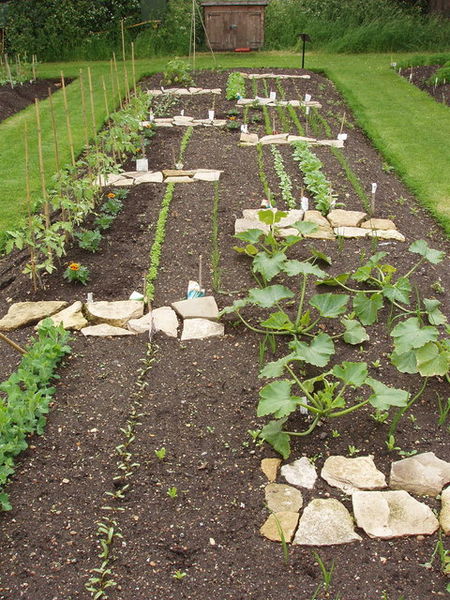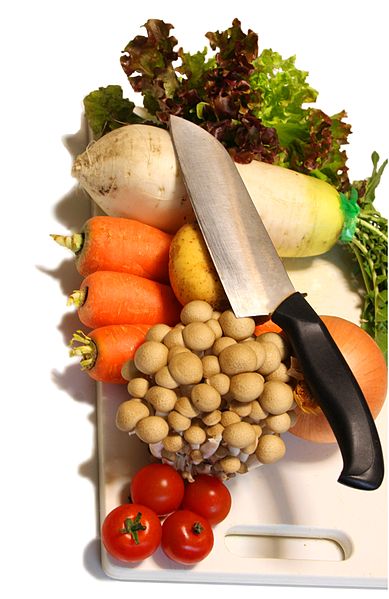
Source: Student vegetable plot, Kew Gardens -
geograph.org.uk - 176615, David Hawgood,
Wikimedia
Let’s talk about food. Imagine that you want to live off the land, grow your own food, and get back to basics.
You set up a plot and get some seeds. It’s early April, and you want to plant so you will have food to eat as soon as possible.
You plant lettuce, peas, spinach, cauliflower, and turnips. It’s not a normal range of vegetables, but they are the vegetables you like the best. Then it occurs to you to ask yourself, “When are these vegetables going to be ready for harvest? When is dinner?”
By looking at the packages, you can’t really tell what you’re going to have after the plants are in the ground. You have to label them to see what you’ve got. You always label with a purpose, and in this case, your purpose is to know the harvest dates.

Source: Chopping board, still life, Wikimedia
Well, what do you know? All these vegetables will be ready to harvest in May, so May will be a great month for you, but things won’t be so good in June, July, and August. You need some variety in your vegetable planning. You need vegetables that will be harvested at different times. The labeling has made clear to you that your vegetables are too much alike as far as harvest dates go.
The usefulness of labeling also applies to sentence variety. You may write a paragraph and feel good about it because it expresses clearly what you wanted to say. However, you can’t glance at the paragraph and tell if there is enough sentence variety to make the writing flow and interest a reader.
What you need to do is label. Instead of relying on instinct, you need to use some systematic brainpower. In this lesson, you will use labeling to decide what changes are necessary to guarantee sentence variety in your writing.